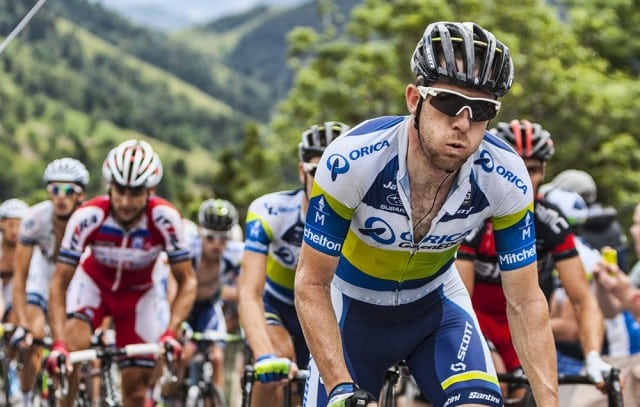When to Grit, When to Quit
Do you power through the pain, or hang it up for the day? These guidelines should help diagnose common ailments like a painful lower back or numb hands while on the road.
Do you power through the pain, or hang it up for the day? These guidelines should help diagnose common ailments like a painful lower back or numb hands while on the road. By Blair Martin.

While cycling is a relatively forgiving sport, it is not completely without some risk. When you are riding, holding onto the handlebars and driving the pedals intentionally places the body under load and stress—for you, your muscles, and your skeleton. Combine these efforts with adequate rest and nutrition, and your body adapts to the demands of cycling, and you improve. This is known to some as the ‘training effect.’
But how can you tell if the load you are putting your body under is too much? When are you causing too much tissue damage, and what is the trigger that should make a rider consider stepping off and finding a ride home?
As a health professional specialising in the treatment and rehabilitation of cycling-related issues, it won’t come as a surprise that my advice would be to consult your cycling-savvy physio, osteo, or chiro (or bike-fit professional) any time you experience any unpleasant discomfort during or after cycling. Pain is a very subjective measure influenced by a number of factors—one person’s agony may be perceived as another’s ideal state of tiredness.
The following is a guide to the difference between ‘good’ pain and ‘bad’ pain for some common causes of riding discomfort.
The Back
The Feeling: This ranges from a gradual onset during riding, which eases when you stand up or off the bike, to debilitating pain with a transfer of symptoms to the leg (pain, numbness, weakness, loss of sensation, etc.), which doesn’t ease after riding.
The Causes: This is usually a combination of poor biomechanics (tight hamstrings and hip flexors, poor pelvis, and gluteal stability), poor bike set-up (the saddle could be low or rearward, there could be too much reach or drop in the handlebars, or an incorrect saddle shape or tilt), or training overload.
Take Caution When: The pain can be eased by standing up or stretching while pedalling, or when the pain remains consistent but tolerable, and does not worsen as you continue to ride.
Red Flags: Loss of muscle strength in the back or legs, the loss of sensation in the legs, or when the pain is not eased by standing on the pedals or stretching while riding.
The Neck
The Feeling: Neck pain can range from tiredness from as high as the base of the head to well into the shoulders — in worst cases, the pain can also be felt down through the arms or cause headaches.
The Causes: Poor biomechanics, as with back pain; poor shoulder-girdle and neck-muscle stability; too much office-based work that can lead to bad posture; poor handlebar positioning; and long rides without changing hand position.
Use Caution When: The pain remains consistent but remains tolerable, and doesn’t worsen as you continue to ride.
Red Flags: Loss of muscle strength or sensation in the arms; headaches, dizziness, nausea, or slurred speech while riding; when the pain radiates to the arms; or when the pain is not eased by changing hand position.
The Knee
The Feeling: Knee pain ranges from general ‘awareness’ through the pedal stroke to knife-sharp stabbing, or a deep aching during and long after your ride.
The Causes: Knee pain is usually a combination of: poor bike set-up (the saddle too low, cleats too far forward, or an incorrect float); training overload; or poor biomechanics, such as overactive thigh muscles or poor pelvis stability.
Use Caution When: The discomfort persists, but is eased by standing up on the pedals and does not immediately return when you resume to a seated position.
Red Flags: When the pain worsens as you continue pedalling; when the pain remains after riding, in particular when sitting or on stairs; or if the knee locks in place or you feel unable to support your body weight.
The Hands
The Feeling: Pain, numbness, and pins and needles are the general symptoms of hand pain, but can also include loss of hand strength or a wasting of hand muscles.
The Causes: Direct pressure on the handlebars (often due to poor handlebar shape, poor hood placement, worn bar tape, incorrect gloves, or the saddle tilted nose-down); biomechanics (pelvis stability and shoulder girdles); excessive reach to get to the handlebars; and long days in the saddle.
Use Caution When: Symptoms present themselves, but are alleviated when changing hand position.
Red Flags: When changing hand position does not alleviate the symptoms, when the pain persists post-ride, or when it leads to loss of strength or muscle bulk in the hands.
READ MORE ON: injury-prevention lifestyle

